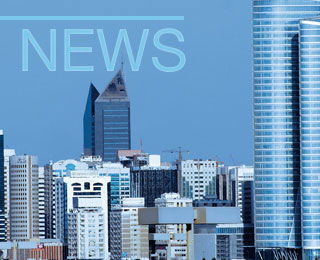The Philippine cement market is attracting plenty of discussions at present with the Competition Commission's investigations into alleged violations of competitive practices, as well as the release of CRH’s full-year results from 2016. On the back of these developments, this week we also hear that the Department of Trade and Industry (DTI) has been approached by two companies to set up two new cement plants in the country, as investors seek to take part in what President Rodrigo Duterte has described at the country's 'golden construction age'.
CRH’s Republic Cement subsidiary revealed that cement demand had risen in 2016, and higher cement prices and lower variable costs enabled operating profits to improve on the previous year. As a 45 per cent shareholder in Republic Cement, the conglomerate Aboitiz Group has been sharing its plans to bid for regional airports and rail projects this year. Republic Cement has failed to win previous public private-partnership projects (PPP), but it is said to be hopeful of participating in future developments such as the bulk water project in Davao.
"We continue to be optimistic that there will be opportunities," said Aboitiz Equity Ventures President, Erramon Aboitiz. "We’re quite excited about these projects."
President Rodrigo Duterte is planning to spend PHP8trn (US$158.9bn) in his six-year government term to build new roads, bridges, railways and airports, and cement producers are lining up to win a share of the business.
Holcim Philippines (LafargeHolcim) has been picking up long-term private sector contracts and last month it announced an agreement with Robinsons Land Corp to supply cement to build 44 of the real estate company’s projects nationwide up to 2019.
Surge in new capacity projects
The news that the DTI now has more applications for cement plants to consider will intensify the need of existing players to secure contracts for long-term projects. The government's 2017 Investment Priorities Plan (IPP) does include cement in the top 10 priority sectors requiring investment, but the document does list the 2017-19 investment priority areas for the Autonomous Region in Muslim Mindanao as needing cement production.
DMCI Holdings Inc also announced at the end of 2016 that it intended to build a 1.7Mta cement plant on Sermirara island and three separate grinding plants in Batangas, Iloilo and Zamboanga.
Existing cement producers are increasing their capacity of course to improve their market share and Eagle Cement Corp announced in March that its PHP12.5bn Cebu plant will in part use proceeds from its planned initial public offering (IPO) to finance the project. The new 2Mta cement plant will include a distribution centre and marine terminals in southern Luzon, Visayas and Mindanao regions. Construction of the works will begin in 4Q17 and the plant is scheduled to be commissioned in 1Q20.
Eagle Cement’s IPO follows a very successful IPO by Cemex Holding Philippines in 2016, which was the largest in the year on the Philippines Stock Exchange at US$533.4m and third-largest IPO ever in the Philippines. Most of these proceeds are going towards the construction of Cemex’s new 1.5Mta plant in Davao City that will come on-stream in 2H19.
Meanwhile, Northern Cement (San Miguel Yamamura Packaging Group) has already commenced its new US$200m expansion of its Sison town (Pangasinan) plant, which will double its capacity to more than 2Mta. The company is also planned to complete construction of three new 2Mta plants in Quezon, Davao and Cebu this year.
The country’s current cement capacity is 29.1Mta, with 16 active cement plants and annual cement consumption is estimated at approximately 26Mt.

Buzzi increases tender offer to Gulf Cement Co
After the offer document submitted on 13 March 2025 for TC Mena Holdings Ltd, a subsidiary of ...